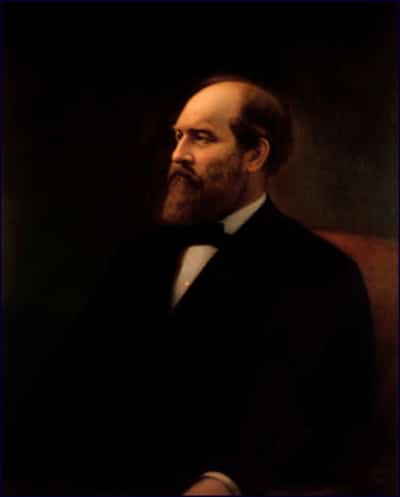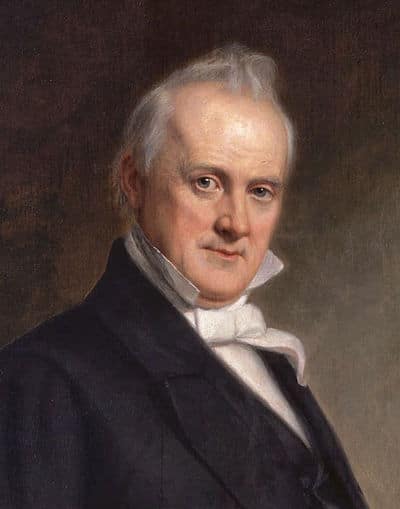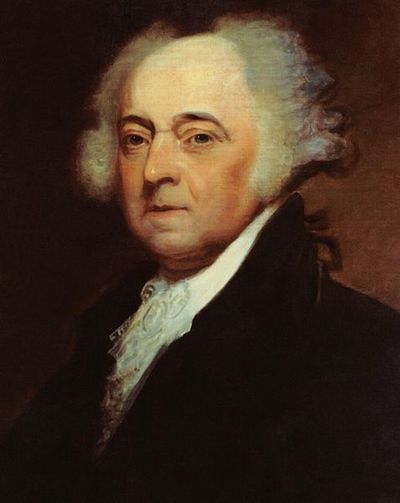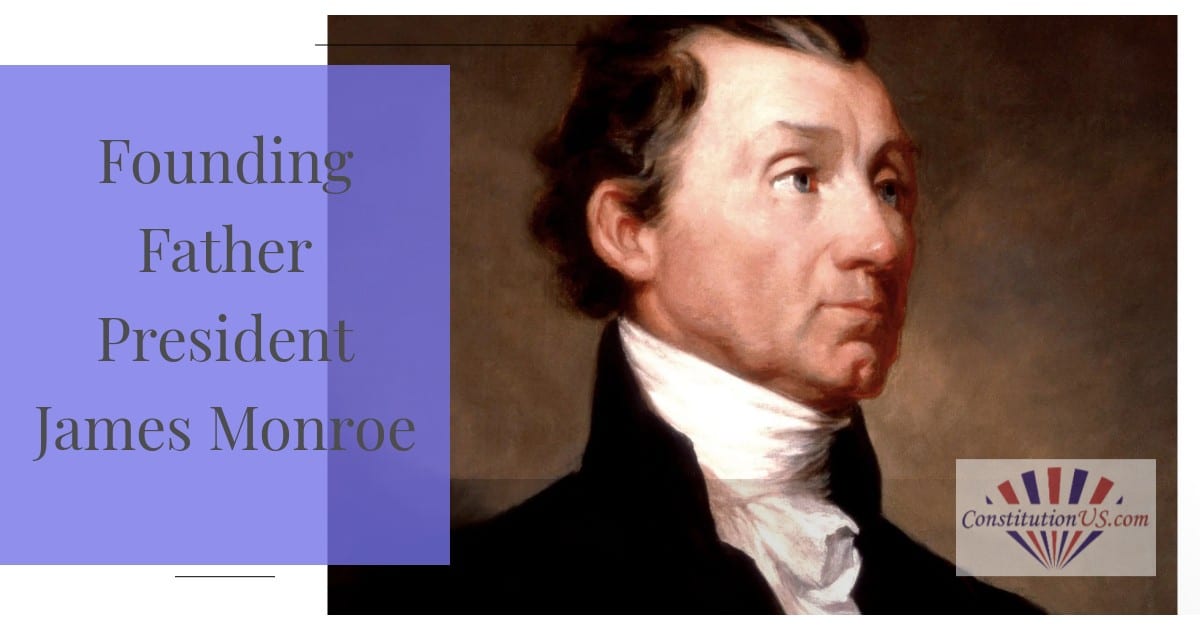Table of Contents
ToggleQuick Facts about President James A. Garfield:
When was James A Garfield born?
James A. Garfield was born in 1831.
Where was James A Garfield born?
James A. Garfield was born in Moreland Hills, Ohio.
How old was James A Garfield when he became President?
James A Garfield was elected as the 20th President at the age of 49.
What years was James A Garfield president?
James A. Garfield served as President from March 4, 1881, to September 19, 1881.
When did James A. Garfield die?
James A. Garfield died in 1881 when he was 49 years old.
How did James A Garfield die?
He died from blood poisoning that developed after he was shot during an assassination attempt.
James Garfield’s Early Life
Childhood and Family
James Abram Garfield was born in 1831 to a poor frontier family in Cuyahoga County, Ohio. As a boy, he helped his widowed mother, Eliza Garfield, run their farm near Cleveland.
After Garfield’s father, Abram Garfield, died when James was an infant, he grew up helping his mother. As he got older, he dreamed of leaving the farm to become a sailor.
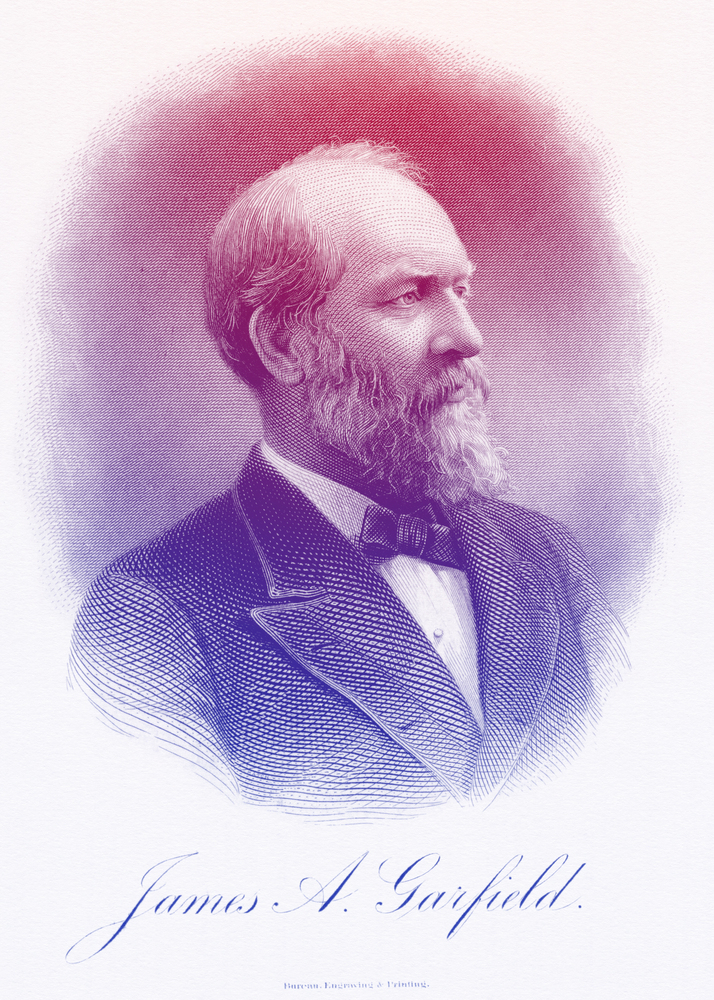
Work on the Canal
At 16, he left home to work on canal boats that carried goods between Cleveland and Pittsburgh, two important frontier towns at the time.
Sailing did not suit Garfield. During his short six-week job on the canal, he reportedly fell overboard 14 times and caught a serious fever, which led him to return home.
Education and Early Ambition
After coming home from the canal, Garfield decided to focus on education. He attended Geauga Academy in Chester, Ohio, and supported himself by teaching part-time.
After his time at Geauga Academy, Garfield went to the Eclectic Institute from 1851 to 1854, working as a janitor to pay his way. At 23, he entered Williams College in Massachusetts, where he was one of the oldest students.
While at Williams, Garfield did well in his studies and enjoyed listening to the famous lecturer, poet, and essayist Ralph Waldo Emerson. He also liked debating with the college’s President, Mark Hopkins.
Garfield liked playing billiards, drinking, fishing, and hunting. He was also known for dating several women at once before choosing Lucretia “Crete” Rudolph, who was a fellow student at the Eclectic Institute.
James Garfield’s Early Career
Teaching and Early Work
After graduating with honors from Williams College in 1856, James A. Garfield went back to the Eclectic Institute to teach full-time. He was trained to teach classical languages but also taught English, history, geology, and mathematics.
Garfield served as the institute’s President from 1857 to 1861.
Law and Politics
Continuing his professional development, in 1861, after studying on his own, Garfield passed the Ohio Bar Exam and became a lawyer.
While still in college in 1856, Garfield joined the new Republican Party, seeing himself as a reformer and supporter of its anti-slavery platform.
In 1856, while still in college, Garfield started his political career by campaigning for presidential candidate John C. Frémont in Ohio. He got his first real experience in politics and his first official title when he became the youngest member of the Ohio legislature in 1859.
As a strong abolitionist, James Garfield fully supported and campaigned for Abraham Lincoln’s 1860 presidential run.
When Southern states began to secede in the early 1860s, Garfield called for strong federal action to stop the rebellion.
James A. Garfield’s Wife and Children
Marriage to Lucretia Rudolph
James A. Garfield married Lucretia “Crete” Rudolph in 1858. She was known for her intelligence, patience, and deep religiosity. Throughout his political career, she gave him steady support and wise advice.
Family Life
The couple had seven children, of whom five lived into adulthood. Their names were Eliza (died young), Harry, James, Mollie, Irvin, Abram, and Edward (died young).
Mollie Garfield
After Garfield’s assassination, Lucretia focused on preserving his papers and legacy. She helped set up the Garfield Memorial Library at their home in Mentor, Ohio.
Their daughter Mollie was especially close to her father and often visited him at the White House, where she helped comfort her mother during his illness. Mollie married Joseph Stanley-Brown in a double wedding on June 14, 1888. He had served as her father’s private secretary. She was 28 years old. They had three children: Rudolph (born April 9, 1889), Ruth (born August 3, 1892), and Margaret “Peggy” (born October 2, 1895).
James Garfield during the Civil War
Military Service and Achievements
After the Civil War broke out, Garfield helped organize the 42nd Ohio Infantry, which he joined as a colonel.
During the war, James A. Garfield stood out twice on the battlefield. He defeated a much larger Confederate force at the Battle of Middle Creek in 1862 and made a brave ride under fire at Chickamauga in 1863. These victories showed his courage and leadership, and they helped boost his reputation as he moved into politics.
Entry into Politics
In 1863, after proving himself in battle and becoming a Major General, Garfield left the military and joined the U.S. House of Representatives, having been elected the year before.
Republican Congressman Garfield
Views and Political Development
Although Garfield had supported President Lincoln’s election, he was seen as a radical Republican and thought Lincoln was too easy on the South. Garfield wanted Confederate leaders to be executed or exiled and their property taken.
Garfield served eight terms as a congressman. Over time, he changed from a radical idealist to an experienced politician, learning to compromise while continuing to work toward important goals.
Garfield’s views changed so much that during Reconstruction after the Civil War, he supported a more moderate approach to rebuilding the South, which had been devastated by the conflict.
Committee Leadership
As a congressman, Garfield served on many committees and became skilled at handling financial matters.
During his time in Congress, Garfield was chairman of the Banking and Currency Committee, the Appropriations Committee, and the Military Affairs Committee.
James Garfield and His Fiscal Policy
Monetary Policy
He also served on the House Ways and Means Committee. Garfield supported “hard money” and strongly opposed paper currency not backed by gold, warning it would cause inflation.

Get Smarter on US News, History, and the Constitution
Join the thousands of fellow patriots who rely on our 5-minute newsletter to stay informed on the key events and trends that shaped our nation's past and continue to shape its present.
Economic Beliefs
His support for “hard money” made him popular with many “gold bug” Republicans, who were often bankers and wholesalers. During the tough financial times of the 1870s, Garfield became so worried about government spending that he opposed federally funded relief projects.
James Garfield and Rutherford B. Hayes
Support for Hayes
In 1876, Garfield supported Ohio governor Rutherford B. Hayes for President, who won in a very close and controversial election. Garfield was part of a 15-person committee that investigated claims of voter fraud and manipulation in several states.
Republican Leadership
During Hayes’s presidency, James A. Garfield became the Republican minority leader. He built his reputation as a dealmaker and compromiser, even among the divided factions of the Republican Party.
Presidential Campaign and Election of 1880
The Republican Nomination
Rutherford B. Hayes was content to serve only one term as president. After his term ended, the Republican Party needed to choose its next candidate. The leading contenders were former President and General Ulysses S. Grant, James G. Blaine, and Treasury Secretary John Sherman.
At the party’s convention in Chicago in the summer of 1880, more than 34 ballots were cast without a clear winner. As voting continued, Garfield started to get more votes. By the 36th ballot, supporters of Blaine and Sherman saw promise in Garfield and began voting for him. He had just been elected to the United States Senate a few days earlier.
After the voting ended, Garfield beat Grant for the nomination, winning 399 to 306. Garfield’s nomination was a surprise. The party chose Chester A. Arthur as its vice president.
The Election of 1880
Garfield’s opponent in the election of 1880 was a career military man who served valiantly during the Civil War and as the military governor of Louisiana and Texas during Reconstruction, Winfield S. Hancock.
Knowing the party needed unity, Garfield worked to bring together the different Republican groups. In meetings in New York City with party leaders, he promised to include all factions when making political appointments after the election.
The election was one of the closest in history. James A. Garfield beat Hancock by just 7,368 votes out of more than 9 million cast, a difference of only 0.08%. However, he won by a much larger margin in the electoral college, with 214 votes to Hancock’s 155.
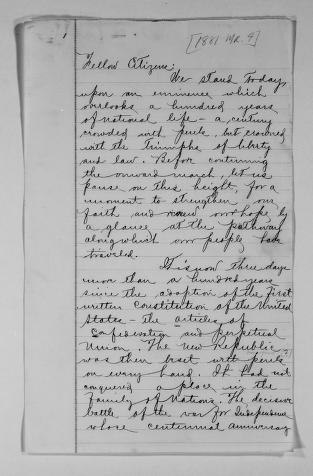
Domestic Affairs during Garfield’s Presidency
Cabinet Appointments
During his short time as President, James A. Garfield’s main domestic tasks included appointing his cabinet and settling a heated debate over who would run the Port of New York.
The Port of New York Dispute
At the time, New York’s ports were very important to the U.S. economy. It was said that the ports of New York City made more money than all the other ports in the country combined.
Garfield chose William H. Robertson for the job at the port, which upset the “Stewart” faction of the Republican Party.
Robertson was part of the “half-breed” faction, and the Stewarts were angry that no one from their group got the job. After the Senate delayed the appointment for months, Garfield finally got his way. Stewart leaders Thomas C. Platt and Roscoe Conkling resigned in protest.
Roscoe Conkling and Party Conflict
Roscoe Conkling was a powerful Republican senator from New York and led the Stalwart faction. He often argued with Garfield over political appointments and party control, seeing the President’s reforms as a threat to his own power.
Notable Appointments and Scandals
Garfield’s notable appointments included Robert Lincoln, Abraham Lincoln’s son, as Secretary of War. James G. Blaine became Secretary of State, and William Henry Hunt, a former attorney from New Orleans, was named Secretary of the Navy.
He recalled government bonds paying 6% interest and refinanced them at around 3.5%, saving about $10 million annually. This was roughly 4% of the federal budget at the time.
A major scandal occurred during Garfield’s tenure as United States Postmaster General, then the largest government agency. It was found to be full of corruption.
The Star Route Scandal, as it was called, shocked the nation and involved members of Garfield’s party selling postal routes for kickbacks.
International Affairs during Garfield’s Tenure
Diplomatic Appointments
Due to his brief presidency, James A. Garfield’s foreign policy primarily consisted of appointing diplomats to vacant posts worldwide.
Writers and Diplomats
Two writers got appointments: James Russell Lowell was named U.S. minister to England, and Lew Wallace became U.S. minister to Turkey.
Unfinished Foreign Issues
If Garfield had not been assassinated, he would have faced issues like Latin American affairs, increased Chinese immigration, and disputes over Pacific fishing rights with England.
James A. Garfield’s Assassination
The Shooting
On the morning of July 2, 1881, while walking through Washington D.C.’s Baltimore & Potomac train station, James A. Garfield was shot on the platform by Charles J. Guiteau. The .44 British Bulldog bullet went through the President’s back and lodged in his pancreas, where it stayed until his death in September. This tragic event happened in the middle of a busy station and left a strong impression on everyone who witnessed it.
The Assassin
Garfield’s assassin was Charles J. Guiteau, a mentally disturbed man who said he shot the President because he was not given a European consul job.
Guiteau reportedly picked the .44 caliber gun because he thought it would look good in a museum. For weeks before the shooting, Guiteau followed President Garfield as he went about his daily life.
Garfield’s Final Days
Sadly for Garfield, doctors could not remove the bullet from his pancreas, and he stayed in a hospital bed until he died on September 19, 1881.
The Role of Dr. D. Willard Bliss
Medical Treatment
After the shooting, President Garfield was treated by Dr. D. Willard Bliss, who took charge of his recovery. Bliss refused to let other doctors help and ignored new medical practices like sterilization. At the time, germ theory was becoming accepted, and antiseptic methods developed by Joseph Lister were already common in Europe. Bliss kept probing Garfield’s wound with unwashed hands and tools while searching for the bullet. These poor medical practices caused serious infections that led to blood poisoning. The difference between medical advances in Europe and Bliss’s choices shows that the infection could have been prevented.
Outcome
Many historians think Garfield might have survived if his wound had been treated properly. Instead, the infection got worse over several weeks, and Bliss’s mistakes caused the President’s death more than the bullet did.
James Garfield’s Death
The Aftermath
Garfield died from complications of the gunshot wound and blood poisoning caused by an infection after he was shot.
Guiteau was put on trial, and after just an hour of deliberation, the jury found him guilty and sentenced him to death by hanging. He was executed on June 30, 1882.
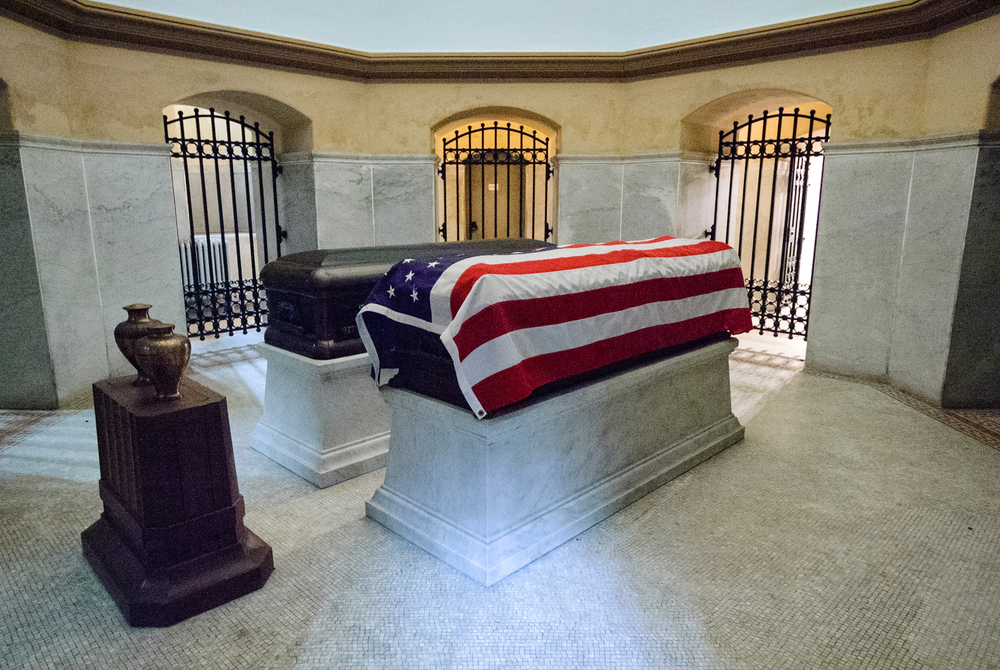
Guiteau’s Note
On the day Garfield died from his wounds, Guiteau wrote a note to Vice President and acting President Chester A. Arthur, saying,
“My inspiration is a godsend to you, and I presume that you appreciate it. . . Never think of Garfield’s removal as murder. It was an act of God, resulting from a political necessity for which he was responsible.”
Was James A. Garfield a Good President?
Although James A. Garfield’s presidency lasted only about six months, he showed he could be a capable and thoughtful leader. He tried to bring together the divided Republican Party and took steps to fight corruption, especially in the postal service. His financial decisions, like refinancing government bonds to save money, showed skill and honesty.
Garfield also supported civil service reform, believing government jobs should be earned by merit, not political favors. His strong morals and background as a self-made man earned him public respect. Since his time in office was so short, it’s hard to know what kind of President he would have been, but he showed the potential to be a good one.
Chester A. Arthur’s Presidency
Leadership After Garfield
After Garfield’s death, Vice President Chester A. Arthur became the 21st President of the United States. Although many saw him as a political loyalist, Arthur turned out to be more independent than expected. He worked to reduce government corruption and supported civil service reform.
Key Achievements
Arthur’s time as president helped restore public confidence after Garfield’s assassination. He signed the Pendleton Act, began modernizing the Navy, and provided steady leadership during a tough transition. Although he served only one term, his presidency marked an important move toward a more professional and less corrupt federal government.
James Garfield’s Legacy
Historical Significance
Because Garfield was assassinated so early in his presidency, he did not have much chance to leave a legacy, except as one of four presidents in U.S. history killed by an assassin’s bullet.
Public Memory
Garfield is remembered as a martyr who died for his country and as a self-educated man who stood up for the causes he believed in, such as hard money, civil rights, and a hands-off approach to the economy.
James A. Garfield was a politician who was killed before he could truly be tested.
Netflix Death by Lightning and the Story of President Garfield
The Series
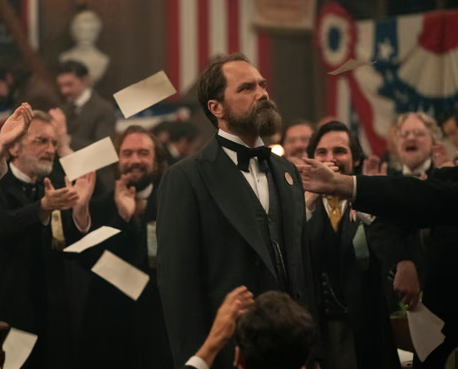
In 2025, Netflix released a series called Death by Lightning, which chronicled the events leading to Garfield becoming President and ultimately his assassination. Michael Shannon played President Garfield, and his killer, Charles Guiteau, was played by Matthew Macfadyen.
Source Material
It was based on Candice Millard’s Destiny of the Republic.
